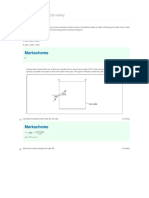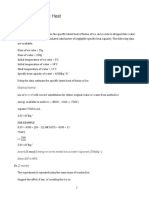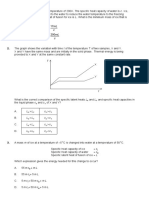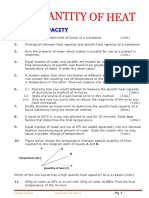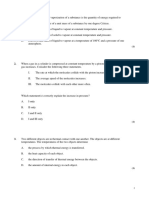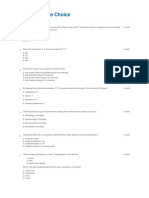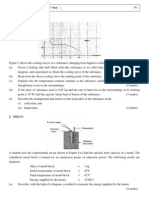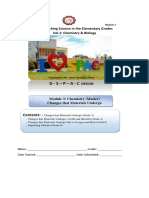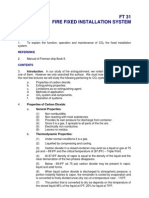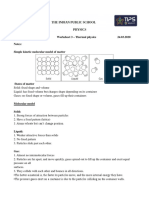0% found this document useful (0 votes)
42 views17 pagesMarkscheme: (43 Marks)
The document contains a series of physics questions and mark schemes related to thermal properties of matter, including concepts like specific heat capacity, latent heat, and energy transfer. It covers various scenarios involving heating, cooling, and phase changes of substances. Each question is followed by a mark scheme indicating the correct answer or explanation for the concepts tested.
Uploaded by
suleyman.pasha.tahaCopyright
© © All Rights Reserved
We take content rights seriously. If you suspect this is your content, claim it here.
Available Formats
Download as PDF, TXT or read online on Scribd
0% found this document useful (0 votes)
42 views17 pagesMarkscheme: (43 Marks)
The document contains a series of physics questions and mark schemes related to thermal properties of matter, including concepts like specific heat capacity, latent heat, and energy transfer. It covers various scenarios involving heating, cooling, and phase changes of substances. Each question is followed by a mark scheme indicating the correct answer or explanation for the concepts tested.
Uploaded by
suleyman.pasha.tahaCopyright
© © All Rights Reserved
We take content rights seriously. If you suspect this is your content, claim it here.
Available Formats
Download as PDF, TXT or read online on Scribd
/ 17
